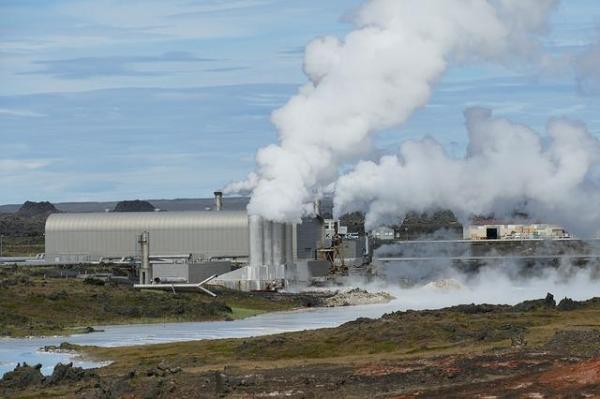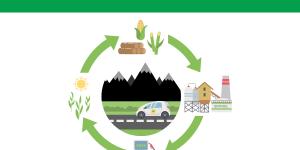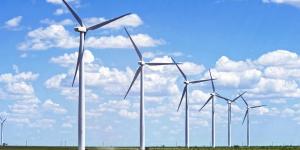What Are Renewable and Non-renewable Energies?


Renewable energy is energy derived from renewable resources that are naturally renewed within a specified period of time. For an energy source to be considered renewable, it must be renewed faster than it is consumed. This includes sources such as sunlight, wind, the movement of water, and geothermal heat. In contrast, a non-renewable resource, also called a finite resource, is a natural resource that cannot be replaced by natural means fast enough to keep up with consumption and will eventually run out.
The following article of thedailyECO explains the main characteristics of renewable and non-renewable energies, as well as their differences.
What is renewable energy?
Renewable energies are those that come from natural, inexhaustible sources that either have a large amount of energy or can regenerate naturally. However, these energy sources must meet their renewal periods in order to truly function as unlimited energy sources.
This type of energy was considered alternative energy in the 1970s. However, it is currently more expensive than conventional energy. Another disadvantage is that the use of these energy sources requires very large areas of land, so the possibility of having these large areas at one's disposal is not always guaranteed.
At this point, however, one detail should be noted. The fact that they are renewable energy sources does not mean that they are not harmful to the environment. Therefore, renewable energy sources are divided into environmentally harmful and non-polluting or clean energy sources.
Among the non-polluting or clean sources we find the following:
- Hydroelectric power
- Solar energy
- Tidal energy
- Wave energy
- Wind energy
On the other hand, polluting renewable energies are those that come from biomass or organic matter. These can be used directly as fuel by burning or can be used once converted into bioethanol or biodiesel. Since they are polluting energies, their problem is the same as that of most nonrenewable energies, their combustion produces carbon dioxide.
Examples of renewable energy
Now that we know what renewable energy is, let us take a closer look at these forms of energy and their impact on the environment.
- Wind energy: we have been using wind energy for hundreds of years. Old-fashioned windmills have evolved into turbines as tall as buildings. Wind energy turns the blades of a turbine that feeds an electric generator and produces electricity, and is one of the cheapest sources of energy.
- Geothermal energy: uses accessible thermal energy from the earth's interior. Heat is extracted from geothermal reservoirs by drilling or other means. Once at the surface, fluids at different temperatures can be used to generate electricity. This technology for generating electricity from hydrothermal reservoirs is mature and reliable, and could even play a role in the future.
- Solar energy: for thousands of years, people have used solar energy to grow crops, keep warm, and dry food. Solar cells, or photovoltaic (PV) cells, are made of silicon or other materials that convert sunlight directly into electricity. Generally, solar panels have little impact on the environment beyond the manufacturing process as long as they are placed responsibly.
- Hydroelectric or hydraulic energy: by turning the turbine blades of a generator, hydropower converts the power of water-typically fast-flowing water in a large river or rapidly falling water from a high point-into electricity. However, this type of power generation often has an impact on the environment. Some divert and reduce natural water flows, limiting access for animals and people who rely on these rivers.
- Osmotic energy: it is obtained from the difference between the salt concentration in river water and in seawater. It is particularly useful in regions where rivers are very large, as a greater amount of energy is generated. The only waste produced is brackish water.
- Tidal energy: is still in the developmental stage, but the ocean will always be dominated by the moon's gravity, making harnessing its energy an attractive option. Tidal barriers, which function like dams and are built in ocean bays or lagoons, are one way to harness tidal energy, but they can be harmful to wildlife.
- Biomass: is organic material that comes from plants and animals, such as grains, wood waste, and trees. When biomass is burned, the chemical energy is released in the form of heat and can generate electricity with a steam turbine. Scientists have recently found that many forms of biomass, especially those from forests, produce higher carbon emissions than fossil fuels. Not to mention the negative impact on biodiversity.

What is non-renewable energy?
Non-renewable energies are, as already mentioned, conventional forms of energy whose resources are limited, i.e. they do not regenerate like renewable energies.
All of these energy sources are produced by burning fossil fuels, which produce large amounts of greenhouse gasses when burned. These gasses are now one of the main causes of climate change, as their quantity in the atmosphere is increasing very rapidly.
Examples of non-renewable energy
Within this type of non-renewable energy, we can find two main groups:
Fossil fuels
Fossil fuels, such as oil (in liquid form), coal (solid), and natural gas (gaseous). These fossil fuels come from biomass that was created millions of years ago and converted into the aforementioned fuels under suitable pressure and temperature conditions. There are three types of fossil fuels which can all be used for energy provision:
- Petroleum: petroleum is an organic compound consisting of a mixture of water-insoluble hydrocarbons, formed from the conversion of organic material that has accumulated in the form of sediments.
- Coal: coal is a sedimentary rock, also of organic origin, formed from plant remains that decompose and accumulate in marshy areas.
- Natural gas: it is formed from a mixture of natural gases, mainly methane, that have decomposed over millions of years as a result of intense heat and high pressure.
The nuclear energy
Nuclear energy is the energy released by the reaction in the fission of heavy atomic nuclei. This is also called nuclear fission. This process produces large amounts of heat, which is used to generate pressurized steam that can be used to produce mechanical energy to run electricity generators.
Nuclear energy has the advantage of producing very small amounts of gasses that cause the so-called greenhouse effect. However, a major environmental problem associated with nuclear energy is the generation of radioactive waste such as uranium mill tailings, spent reactor fuel, and other radioactive waste. These materials can remain radioactive and hazardous to human health for thousands of years.

Summary of renewable and non-renewable energies
To conclude this article, we now summarize all the information presented in the previous sections.
As we have already said, renewable energies are those that come from almost unlimited natural sources, but they need some time to renew themselves. There are environmentally friendly or clean renewable energies and environmentally harmful renewable energies.
Clean renewable energy includes wind energy, solar energy, hydroelectric energy, geothermal energy, tidal energy, wave energy or blue energy. As polluting renewable energies, we have highlighted those whose source is biomass or organic matter. Their problem is that when they are burned, as with conventional energies, carbon dioxide emissions are released into the atmosphere.
On the other hand, what we have said about non-renewable energies is that, unlike renewable energies, they are obtained from resources that are limited and do not have the capacity to regenerate. Usually, these energies are obtained mainly by burning fossil fuels such as oil, coal or natural gas. The burning of these materials contributes to current climate change by emitting a large amount of greenhouse gasses.
There is another group of non-renewable energies, namely nuclear energy. Nuclear energy comes from nuclear fission, a process in which the nucleus of atoms decays to later release energy that is used in thermonuclear power plants to generate electricity. The major disadvantage of nuclear energy is that it takes a very long time for nuclear waste to disappear and lose its radioactivity.
If you want to learn more about renewable and non-renewable energy, do not miss the following video:
If you want to read similar articles to What Are Renewable and Non-renewable Energies?, we recommend you visit our Renewable energies category.







